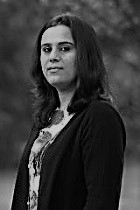Saba Pirzadeh is an assistant professor of English and Environmental Literature at Lahore University of Management Sciences, Pakistan. She completed her PhD in English from Purdue University on a Fulbright fellowship in 2016. Her dissertation Violence, Militarism, and the Environment in Contemporary South Asian Literature explored narrative depictions of the intensification of anthropogenic violence and the exploitation of the environment for purposes of profit, conquest, and consumption. Her research explores issues of militarization, environmental degradation, spatial politics, socio-ecological justice, and ethics of representation in literary texts.
RCC Research Project: Literary Waters, Petro-Violence, and Ecological Ethics in Helon Habila’s Oil on Water
Selected Publications:
- “Postcolonial Development, Socio-ecological Degradation and Slow Violence in Pakistani Fiction.” In The Routledge Handbook of Ecocriticism and Environmental Communication, edited by Scott Slovic, Swarnalatha Rangarajan, and Vidya Sarveswaran. Abingdon, UK: Routledge, 2019. Routledge International Handbooks.
- “Topographies of Fear: War and Environmental Othering in Mirza Waheed’s The Collaborator and Nadeem Aslam’s The Blind Man’s Garden.” Interventions. https://doi.org/10.1080/1369801X.2018.1558090.
- with Arielle McKee. “Arthurian Eco-conquest in Geoffrey of Monmouth, Wace, and Laȝamon.” Parergon 34, no. 1 (2017): 1-24.
- “Children of Ravaged Worlds: Exploring Environmentalism in Paolo Bacigalupi's Ship Breaker and Cameron Stracher's The Water Wars.” ISLE: Interdisciplinary Studies in Literature and Environment 22, no. 2 (Spring 2015): 203-221.
- “Persecution vs. Protection: Examining the Pernicious Politics of Environmental Conservation in The Hungry Tide.” South Asian Review 36, no. 2 (2015): 107-120.


